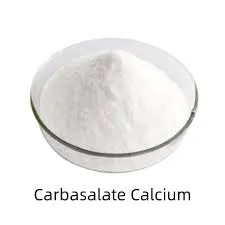- Afrikaans
- Albanian
- Amharic
- Arabic
- Armenian
- Azerbaijani
- Basque
- Belarusian
- Bengali
- Bosnian
- Bulgarian
- Catalan
- Cebuano
- Corsican
- Croatian
- Czech
- Danish
- Dutch
- English
- Esperanto
- Estonian
- Finnish
- French
- Frisian
- Galician
- Georgian
- German
- Greek
- Gujarati
- Haitian Creole
- hausa
- hawaiian
- Hebrew
- Hindi
- Miao
- Hungarian
- Icelandic
- igbo
- Indonesian
- irish
- Italian
- Japanese
- Javanese
- Kannada
- kazakh
- Khmer
- Rwandese
- Korean
- Kurdish
- Kyrgyz
- Lao
- Latin
- Latvian
- Lithuanian
- Luxembourgish
- Macedonian
- Malgashi
- Malay
- Malayalam
- Maltese
- Maori
- Marathi
- Mongolian
- Myanmar
- Nepali
- Norwegian
- Norwegian
- Occitan
- Pashto
- Persian
- Polish
- Portuguese
- Punjabi
- Romanian
- Russian
- Samoan
- Scottish Gaelic
- Serbian
- Sesotho
- Shona
- Sindhi
- Sinhala
- Slovak
- Slovenian
- Somali
- Spanish
- Sundanese
- Swahili
- Swedish
- Tagalog
- Tajik
- Tamil
- Tatar
- Telugu
- Thai
- Turkish
- Turkmen
- Ukrainian
- Urdu
- Uighur
- Uzbek
- Vietnamese
- Welsh
- Bantu
- Yiddish
- Yoruba
- Zulu
Nov . 19, 2024 19:22 Back to list
ivermectin injection for cattle and swine
Ivermectin Injection for Cattle and Swine An Overview
Ivermectin is a widely used antiparasitic agent that plays a crucial role in the veterinary field, particularly for livestock such as cattle and swine. This drug belongs to the avermectin family, which is derived from a soil bacterium called *Streptomyces avermitilis*. Ivermectin is effective against a variety of parasites, including nematodes (roundworms) and ectoparasites (external parasites) like mites and lice, making it an invaluable tool for livestock treatment and management.
Mechanism of Action
Ivermectin works by interfering with the nervous system of parasites. It binds to glutamate-gated chloride channels and other ligand-gated ion channels, leading to paralysis and death of the parasites. Additionally, it enhances the release of gamma-aminobutyric acid (GABA), an inhibitory neurotransmitter, which further contributes to the paralysis of the parasites. This dual action against various types of parasitic organisms is what makes ivermectin particularly effective and appealing for use in cattle and swine.
Indications and Dosage
In cattle, ivermectin is commonly administered to treat conditions caused by internal and external parasites, including gastrointestinal roundworms, lungworms, lice, and mites. For swine, ivermectin is used to combat parasites such as Strongyloides, Ascaris, and various species of lice and mites. The dosage of ivermectin can vary based on the specific parasite being targeted, the age and weight of the animal, and the formulation of the drug used (injection, oral, etc.). Typically, the injectable form of ivermectin is preferred for its ease of use and rapid absorption.
Generally, the typical dosage for cattle is about 200 micrograms per kilogram of body weight, although this can vary. For swine, the dosage is commonly around 300 micrograms per kilogram. It is crucial for veterinarians and livestock managers to follow the manufacturer's guidelines to minimize the risk of underdosing or overdosing, which may lead to ineffective treatment or potential toxicity.
ivermectin injection for cattle and swine

Benefits
The use of ivermectin in cattle and swine has several benefits. First and foremost, it significantly enhances the health and productivity of livestock by effectively controlling parasitic infections that can lead to weight loss, decreased milk production in dairy cattle, and overall poor growth rates in young animals. A healthier herd means improved economic returns for producers due to higher yields, better feed conversion, and lower veterinary costs in the long run.
Additionally, ivermectin is known for its relatively low toxicity to mammals when used at recommended dosages, making it a safe choice for livestock. Its convenience and effectiveness have contributed greatly to its popularity among veterinarians and farmers alike.
Resistance Concerns
Despite its effectiveness, there are growing concerns regarding the development of resistance to ivermectin. Overuse or inappropriate use of this antiparasitic drug can lead to reduced efficacy, as parasites evolve mechanisms to evade its action. This has prompted a push for integrated parasite management practices, including rotational grazing, the use of different classes of antiparasitics, and regular monitoring of parasite loads in livestock.
Conclusion
Ivermectin injection for cattle and swine is an essential practice in modern veterinary medicine, providing an effective means of controlling a variety of parasitic infections. By understanding the mechanisms, proper dosages, and potential challenges, livestock managers can better maintain the health and productivity of their herds. As resistance becomes increasingly concerning, it is vital to adopt responsible use practices and consider alternative management strategies to safeguard the efficacy of ivermectin and ensure the ongoing health of livestock. This proactive approach will help sustain the benefits that ivermectin offers to the industry while protecting animal welfare and economic viability.
-
Guide to Oxytetracycline Injection
NewsMar.27,2025
-
Guide to Colistin Sulphate
NewsMar.27,2025
-
Gentamicin Sulfate: Uses, Price, And Key Information
NewsMar.27,2025
-
Enrofloxacin Injection: Uses, Price, And Supplier Information
NewsMar.27,2025
-
Dexamethasone Sodium Phosphate Injection: Uses, Price, And Key Information
NewsMar.27,2025
-
Albendazole Tablet: Uses, Dosage, Cost, And Key Information
NewsMar.27,2025













